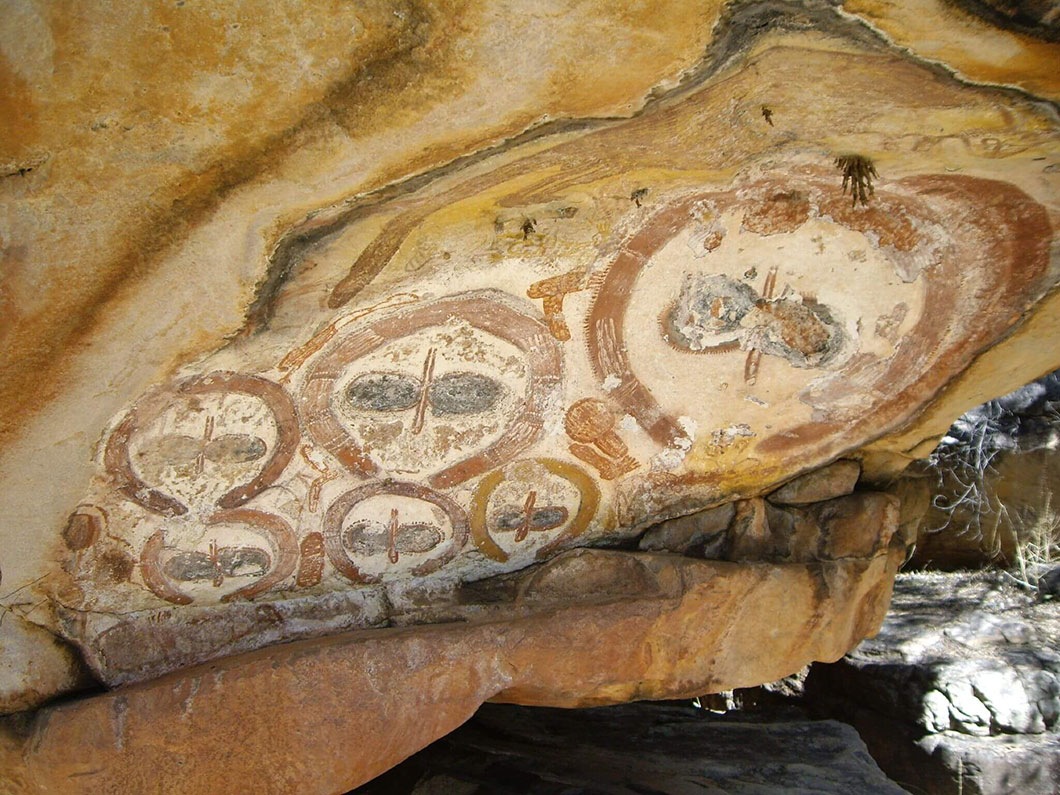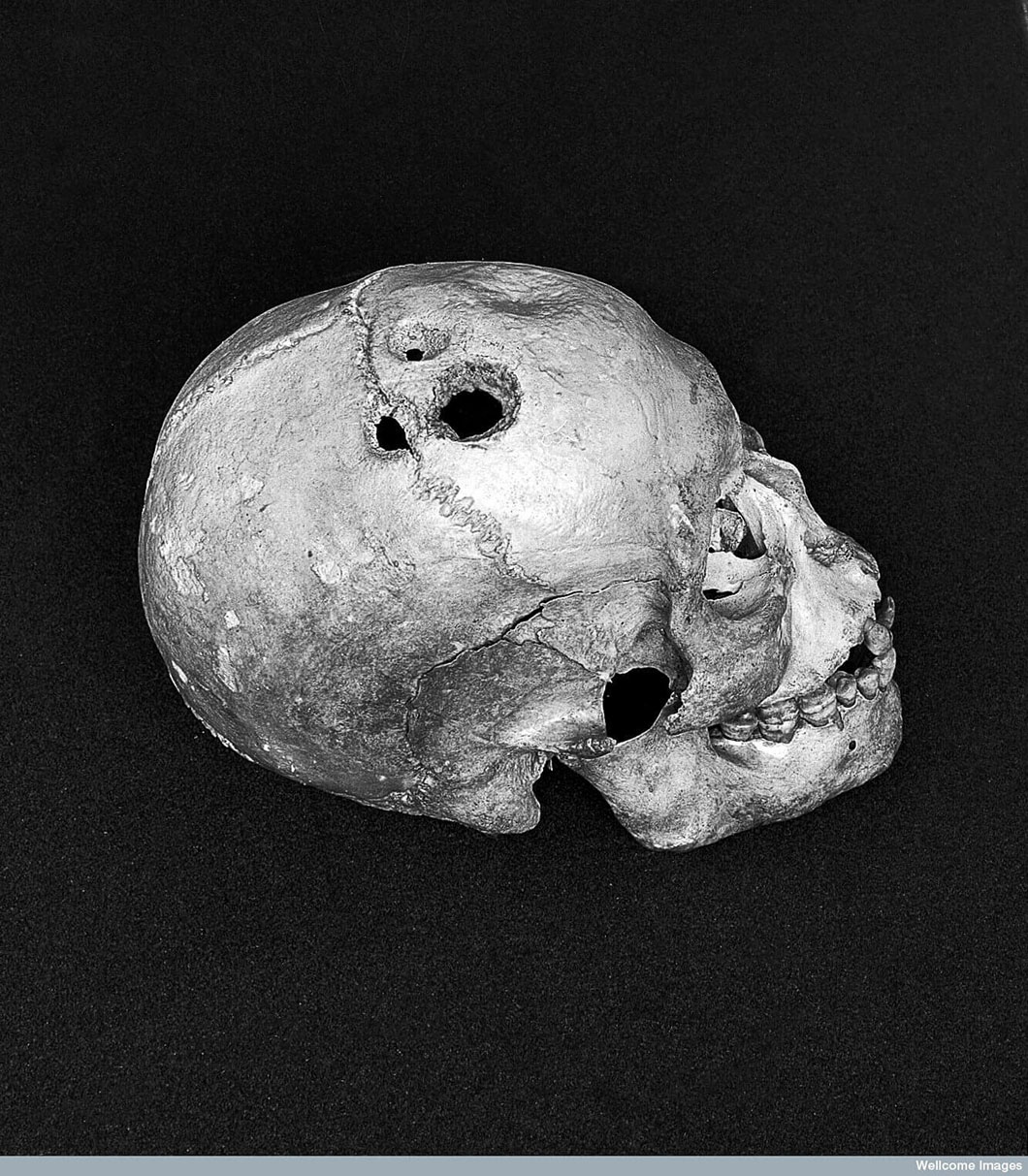This topic takes on average 55 minutes to read.
There are a number of interactive features in this resource:
 History
History
 Biology
Biology
It is difficult to imagine anything other than modern medical treatments but for thousands of years humans have become ill and for the same amount of time people have tried to cure them. Our ideas about medicines in prehistoric times come from archaeologists who have excavated and explored ancient sites. Their findings reveal a very different world to the one we experience today.

Indigenous Australian rock art from about 50,000 years ago
Cave paintings and symbolic artefacts found by archaeologists suggest the earliest humans believed in spirits and supernatural forces.
Animals, the stars, the land in which they lived and dead ancestors all inhabited a spirit world that was connected to their everyday life. Special individuals, like Shamen, were thought to be able to contact the spirit world and seek their guidance when they entered mysterious trances. These men and women would call upon the spirits to bring good hunting or heal the sick and were possibly the first doctors.
Spirit healers would perform ceremonies and cast spells to treat the sick. We also believe that they dispensed the first medicines. Drinking the blood of a wild animal killed in the hunt was believed to give hunters special powers or eating special plants known only to the shaman could treat sickness. It is possible that these treatments would sometimes have a beneficial effect and it is thought that drugs like digitalis and morphine were first discovered in this way.
One form of primitive surgery seems quite shocking. Ancient skulls have been found with a hole bored into them. This appears to have been a deliberate operation and carried out whilst the person was still alive. We can only speculate as to the reason for this operation, called trepanning, but it may have been to allow the evil spirits to leave a sick person. Skulls show that the wounds healed and bone grew back so amazingly it appears that patients often survived this radical brain surgery.
Western medicine is based on scientific observation and experimentation. We no longer live in the mystical spirit world of the ancients but that does not mean that beliefs no longer play a part in healing. Many people still visit faith healers or follow alternative therapies that claim to tap into invisible forces of nature. Indeed, Shamen still play an important part in certain Native American and African cultures.

Trepanning: an ancient human skull. Note the holes at different stages of healing; one hole has almost completely healed.